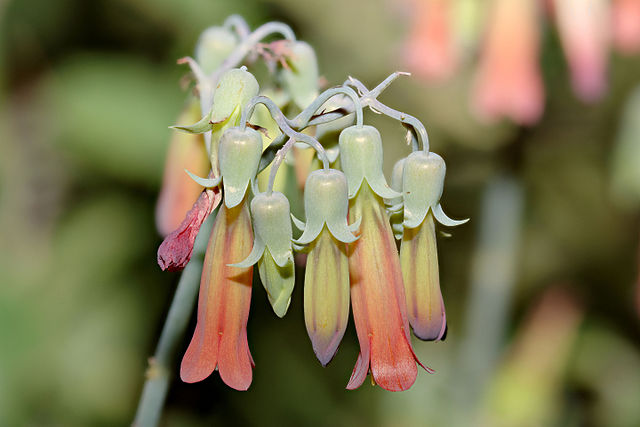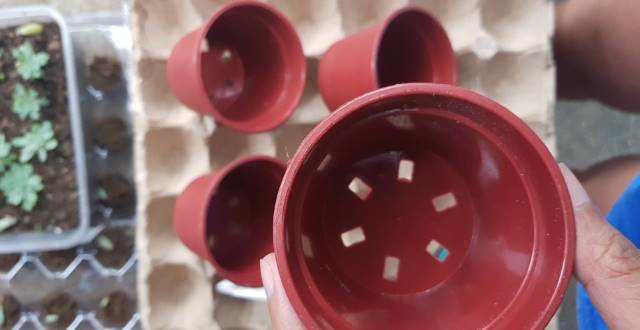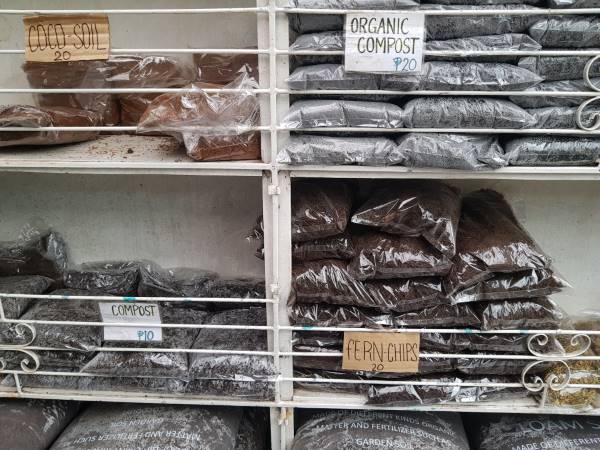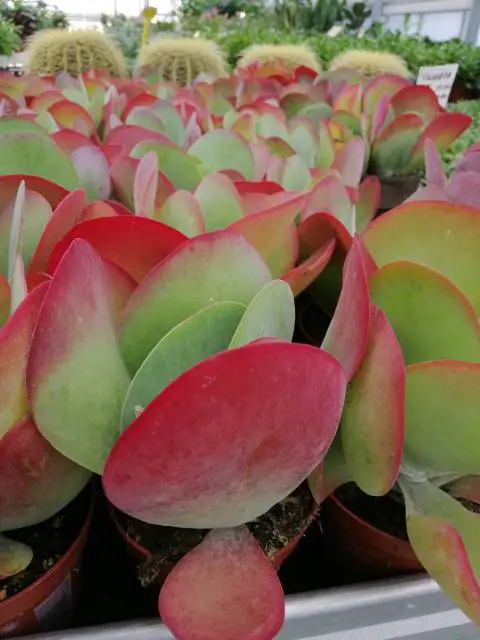Kalanchoe Rosei is the common houseplant that decorates apartments with bright yellow, pink, scarlet, burgundy, white inflorescences, and beautiful large leaves.
Kalanchoe Rosei is a perennial to biennial, completely bare plant that can reach heights of up to 1.8 meters. Its simple, upright shoots are brownish green. The polymorphic, gray-green to pale reddish, slightly spotted leaves are petiolate. The petiole is 2 to 16 millimeters long. Their thick, mostly lanceolate to oblong lanceolate or linear-lanceolate, pinnate, spear-shaped, three-lobed leaf blade is 6 to 17 centimeters long and 0.5 to 1.5 centimeters wide. Its tip is pointed, the base wedge-shaped. The leaf margin is serrated and serrated and bears brood buds.
Kalanchoe Rosei belongs to the fatty family. Almost all Kalanchoe species have thick, fleshy leaves. Flowers of different types differ in shape, color, size and accuracy.
Kalanchoe Rosei Succulent Care
The care of Kalanchoe Rosei succulent is simple and understandable even to the most newbie florist. The plant is able to get used to even the most difficult conditions, to do without watering and human attention for a long time. But this does not mean at all that you need to throw a flower.
The Kalanchoe Rosei will thank you for its beautiful appearance and healing properties, if you take care of it. For accelerated growth, the plant should be on the east window or on the west side of the house. The Kalanchoe Rosei flower will not survive in direct sunlight, but it will not like it in the shade. If the flower does not get enough light, then it dries and withers.
Soil
Ready-made succulent soils are great for Kalanchoe Rosei. You can make a good mixture yourself by mixing sand, turf soil, leafy soil and peat.
Lighting
In winter, florists recommend moving the pot to the south side of the apartment. For the plant to bloom, the number of hours of sunshine per day should not be lower than 12 hours. In the cold season, you can use additional lighting with fluorescent lamps.
This southern plant adapts well to high temperatures. In summer, it is resistant to temperatures up to plus 30 degrees, in winter it is suitable for a temperature regime of 15- 18 degrees. No flower buds will form at temperatures outside this range.
The Kalanchoe Rosei needs regular watering, despite its function of storing moisture. In hot weather, it must be watered abundantly. The rest of the time, watering depends on the room conditions and the state of the soil cover.
Moisturizing
In winter, on the contrary, moisture is reduced. The Kalanchoe Rosei is able to live in conditions of lack of moisture, but water logging will destroy it.
For its content, it does not matter what the air humidity will be – lowered or above the permissible level. Moistening the leaves will not harm the plant and should be carried out at least 1-2 times a month in order to remove dust and dirt particles. Also, the surface of the leaves must be wiped with a wet sponge or cloth.
Kalanchoe Rosei should not be kept in a room with high humidity. The flower reacts painfully to an excess of water, including in the air.
Any soil is suitable as a soil for transplanting a plant, but it is better to take a ready-made moisture-permeable substrate with nutrients. When self-preparing the soil, it is necessary to add leaves, humus, peat and charcoal to it.
Kalanchoe Rosei Watering
The amount of water and the frequency of watering depends on the season and plant conditions. In late spring and summer, the plant is watered abundantly if the Kalanchoe Rosei spends a lot of time in the sun.
In winter, watering is carried out less often, but does not stop at all: with a lack of moisture, the leaves begin to dry out. Water is poured onto the plant not from above (this can lead to the formation of rot), but into the pot tray.
Temperature
Feels comfortable in a wide temperature range. In summer it can reach 28 ° C, and in winter up to 10 ° C, while the optimum temperature is between these values. In a hot room, the plant may develop diseases, the laying of flower buds is disturbed.
Pot
Clay pots will be the most preferable for growing indoor Kalanchoe Rosei. This material is very porous, which promotes good respiration of the plant’s root system and has a beneficial effect on good growth and flowering in the future.
The size of the pot is selected based on the size of the flower. The tray should be large so that excess liquid flows out of it, and it will be more convenient to water.
Pruning
The round, lush bush is the ideal shape for the Kalanchoe Rosei. To give the plant such a shape, you need to carefully monitor the shoots.
When they start to grow, cut off the top two leaves. At this point, two more shoots will soon appear. Let them grow until the third pair of leaves appears. Clip again. Do these steps until the bush takes a rounded shape.
Top Dressing
Feeding Kalanchoe Rosei is important. The photo shows the rich green color of the fleshy leaves. This is influenced by feeding. Any fertilizer for cacti is suitable for feeding. Top dressing should be done in late spring and autumn, when the bud formation system is laid.
Experienced florists recommend transplanting the plant only when necessary, when the ground sours from strong moisture. This measure will help the plant get rid of pests and diseases. When transplanting, choose a container so that the root system can fully fit.
To maintain a neat appearance of the plant, cut off the shoots and pinch the leaves. Shoots are cut directly in the spring, shortening them exactly half the length.
The Kalanchoe Rosei plant blooms with sufficient light conditions for at least 12 hours a day. Its flowers can be carefully cut and immersed in water, they will stand for a long time and retain their beauty. Flowering mainly occurs in the spring during the summer months.
Kalanchoe Rosei Propagation
Kalanchoe Rosei can multiply without human participation (it will be enough for the baby to separate and fall into the soil). The optimal time for propagation by cuttings is late winter-early spring or late summer-early autumn. One leaf or cut off shoot is taken. The length of the handle should not exceed 10 centimeters.
After a couple of weeks, immersed in water or a container with important sand, the cutting should take root. To speed up the process, the cuttings are covered with a transparent glass or film. This is followed by the process of transplanting into the prepared soil. As the plant grows, it can be transplanted into a more beautiful and deeper container.
For beginner flower growers, seed propagation is also suitable, which must be planted in moist soil to create a greenhouse. The greenhouse temperature should be 16-20 degrees with constant ventilation and watering with warm water.
There is a scientific study that has proven that when planting seeds, bio-humus stimulates faster growth, acceleration of flowering and improvement of the physical properties of the plant. A month later, the seedlings need to be transplanted into separate containers. Flowers on Kalanchoe Rosei, which was grown from seed, begin to appear only after one year.
Pests and Diseases
Aphids are a dangerous attack for the Kalanchoe Rosei. Aphids are easily detected: there are small green insects on the leaves of the affected Kalanchoe Rosei.
Such a neighborhood can sadly affect the condition of the plant. The foci of the disease will have to be cut off and burned, and the healthy parts of the plant should be treated with potassium soap.
When a gray bloom appears on the stem and leaves, you should immediately be concerned, since, most likely, these are scale insects.
Scabbards worsen the condition of the plant, a fungus develops on it. These pests produce mucus, so treat the affected surfaces with an alcohol solution before removing them. Then take a brush and remove insects with it, and then repeat the treatment with any alcohol solution.
Kalanchoe Rosei Growth
This plant can often be attacked by pests. For example, aphids or felt is a common problem in dry rooms. Another disease is powdery mildew or gray mold.
Yellowed leaves are an important signal of this disease. If you overflow and over moisten the plant, gray rot may appear. The plant itself should be bright green. A pale color means a lack of vitamins and improper care.
Properties
About the Kalanchoe Rosei plant, properties for treatment and help at home. Have you ever heard the name Surgeon Without Knife, Household Doctor, or Indoor Ginseng? Here we are talking about Kalanchoe Rosei. The healing properties of this have been mentioned in the historical literature.
Kalanchoe Rosei juice is widely used in medicine. It is used for the following diseases: rhinitis, periodontal disease, stomatitis, tonsillitis, throat diseases.
At home, the juice of the plant has healing powers and is used in the treatment of diseases. Kalanchoe Rosei juice is used in cosmetology, it is able to cure skin diseases and even a runny nose.
To prepare the composition of the drops, the soft, juicy green of the leaves of the plant is taken, which is not watered for 6 days. In addition, canned kalanchoe Rosei juice is used in the treatment of ulcers and purulent wounds, in the field of dentistry and gynecology.
Tincture of this plant will help to cope with varicose veins in the legs. It is necessary to rub the diseased areas with a solution in a course that lasts up to 10 weeks.
Conclusion
Well, let’s conclude. Kalanchoe Rosei is an excellent indoor plant option, suitable for both experienced flower growers and beginners. Kalanchoe Rosei is undemanding to care for, which makes it incredibly convenient for keeping in modern apartments.
In addition, Kalanchoe Rosei can be an excellent helper in health-related matters. Kalanchoe Rosei will delight you with its pleasant appearance, and if necessary, will be able to show its healing properties.
Featured Photo Credit: Thomas Bresson, CC BY-SA 4.0




